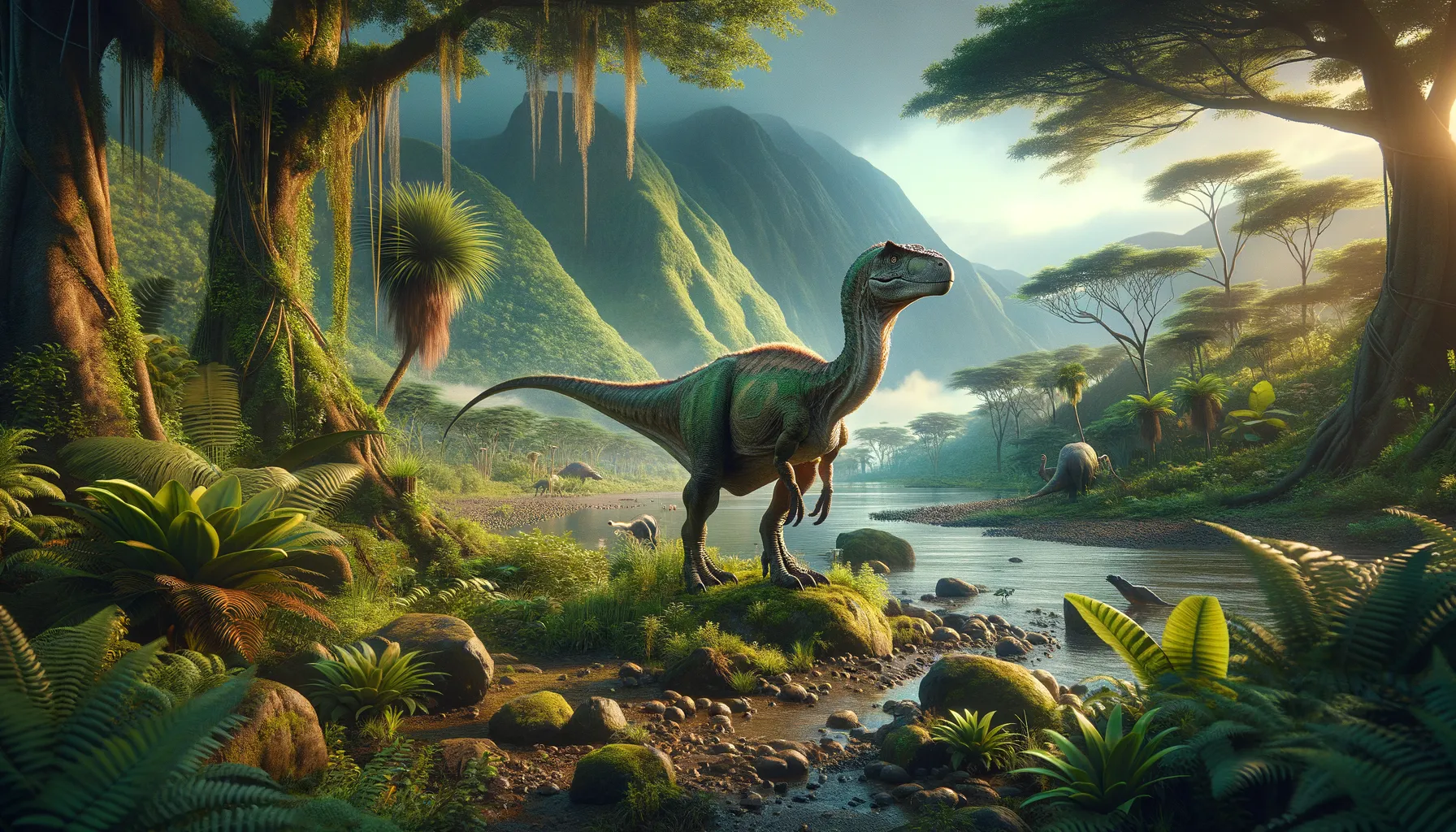
Pantydraco
Small but significant Jurassic herbivore.
Period
Jurassic
Length
Roughly 3 to 4 meters long.
Height
Around 1 meter tall at the hip.
Weight
Approximately 50 kilograms.
Pantydraco was a small, early dinosaur of the Jurassic period known for its bipedal stance and herbivorous diet. Its discovery in Wales provided significant insights into the evolution of early sauropodomorphs. With a modest size, Pantydraco played a vital role in its ecosystem, showcasing traits that would be further developed in its larger descendants. Its fossils give us clues about dinosaur life in a then lush, vegetative landscape.
Diet
Pantydraco primarily fed on plants, using its adapted jaws to process foliage. Its diet likely included ferns and small leafy plants, common in its Jurassic habitat.
Hunting
Being an herbivore, Pantydraco did not hunt other animals. Instead, it foraged for vegetation, likely relying on sight and memory to locate food sources.
Environmental challenges
Living in the early Jurassic period, Pantydraco faced periods of climate fluctuations which affected plant life availability. It had to adapt to seasonal changes that influenced its food sources. Competition with other herbivores would have been a constant challenge, as multiple species often vied for the same plants.
Speed
Moderate, suitable for a small bipedal animal.
Lifespan
Likely around 10 to 20 years.
First discovery
Discovered in the early 2000s in Wales.
Fun Facts
- Pantydraco was a small dinosaur that lived during the late Triassic period, around 215 million years ago.
- It was a herbivore, which means it primarily ate plants and leafy vegetation.
- Pantydraco is believed to have walked on two legs most of the time but could also move on all fours.
- This dinosaur is named after the Pant-y-ffynnon quarry in Wales, where its fossils were first discovered.
- Pantydraco belonged to a group of early dinosaurs called sauropodomorphs, which later evolved into giant long-necked dinosaurs.
- Despite its small size, Pantydraco played an important role in the ecosystem as one of the early plant-eating dinosaurs.
- The fossils of Pantydraco help scientists understand the transition from early dinosaurs to larger, more complex forms.
Growth and Development
Pantydraco, like many early dinosaurs, went through rapid growth phases, especially during early life. Its development included the gradual elongation of limbs, which aided in its bipedal mobility. Juveniles likely stayed close to safety and food sources until reaching a more mature size.
Habitat
Pantydraco inhabited forests and other vegetative environments of the early Jurassic. Its surroundings were likely lush with plants, providing ample food. It would have needed a habitat with a balance of cover for safety and open areas for foraging.
Interaction with other species
Pantydraco coexisted with other early dinosaurs and prehistoric reptiles, which influenced its behavior and adaptations. Avoidance and competition were common, particularly with other herbivores sharing the same diet. Defensive behavior may have been necessary against carnivorous predators.
Natural lifespan
Pantydraco likely lived up to 20 years in the wild.
Reproduction
Pantydraco reproduced through egg-laying, like most dinosaurs. Clutch sizes might have been small, ensuring parental investment in a limited number of offspring. Nesting sites would have been strategically chosen for protection against predators and environmental elements.
Social behaviour
Pantydraco might have lived in small groups or pairs, facilitating cooperative use of food sources and protection. Communication through vocalizations or body language could have been crucial in maintaining social bonds.
Fossil locations
Fossils of Pantydraco were primarily found in Wales, providing key insights into its early Jurassic environment. These locations have yielded important paleontological findings, aiding in understanding the ecological conditions of the period.
